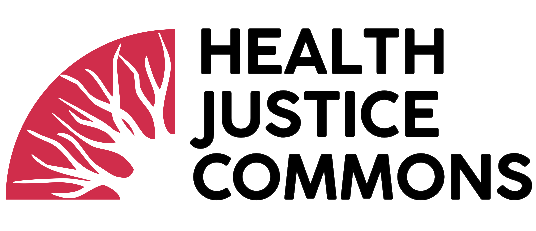Medical Industrial Complex
When most of us think of healthcare, we don’t think of the Medical Industrial Complex which is comprised of interlocking institutions like big pharma, multi-billion dollar health insurance corporations, medical technology companies, and governmental regulatory bodies like the FDA and EPA. In actuality, these entangled institutions form the basis of US Healthcare. They also play a profoundly overlooked role in degrading national and global health, enabling climate change, and perpetuating racism, sexism, classism, homophobia, transphobia and ableism.
Big pharma corporations often own major agribusinesses, such as Bayer-Monsanto. It is part of the standard business model of these mega-corps to manufacture known carcinogens like glyphosate (RoundUp), while selling cancer medications. Syngenta uses a similar model. Yet, these glaringly extractive and unjust practices are so well concealed and healthcare in the US and globally so hard to access, our communities have yet to take on the MIC. Further, with over 95% of the world’s population having 1 or more illness or disabilities, we are profoundly dependent on these systems. This dependency, however, is by design. The hidden history of the US healthcare system reveals that from the start its institutions were built in ways which mirror other industries to center profit and exploit vulnerable communities. US healthcare’s foremost engineers in the early 1900s, were members of the Rockefeller, Carnegie and Morgan families. You can learn more here and here, and by joining a course.
Learn more about the racist roots of the modern gynecology* and how racism and other forms of oppression are endemic in the US healthcare system: here, here and here.
*CW: this article contains information overviewing the non-consensual experimentation on enslaved Black women.
Prison Industrial Complex
Critical Resistance uses the term Prison Industrial Complex (PIC) to describe the overlapping interests of government and industry that use surveillance, policing, and imprisonment as solutions to economic, social and political problems.
People’s Science
There are many ways of defining People’s Science. The Health Justice Commons believes:
People have the right and power to determine what is healthy. People have the right and power to generate knowledge. Community generated knowledge is powerful and legitimate.
This forms the basis of how we define People’s Science. In today’s society, scientific studies and technological development is nearly entirely in the hands of large corporations and institutions with limited public accountability or transparency. People’s Science calls for democratically designing studies and real-world solutions which include those most impacted in the design process and implementation. Data, or the products and practices generated should be used in the service of social and environmental justice. People’s Science looks to the natural world, the wisdom of ecosystems, and the planet itself to solve problems caused by humanity. Finally, following the leadership of Indigenous communities, which is grounded in centuries-old principles of sustainability, health and resilience, and is often disruptive to some western science’s most harmful assumptions and practices, is foundational to People’s Science. The #GreenNewDeal, led by many Indigenous communities, or the creation of massive seed banks in resistance to agribusiness-driven GMOs in Indian, are powerful examples of People’s Science in action.
For more on People’s Science check out the powerful work of Dr. Ruha Benjamin, Dr. Alondra Nelson, Harriet Washington, and Dr. Deboleena Roy, scholars who strongly inform our work.
You can also check out the work of the Greater Good Science Center and learn more about India’s People's Science Movement in India.
Learn more about Indigenous ways of knowing here and here.
